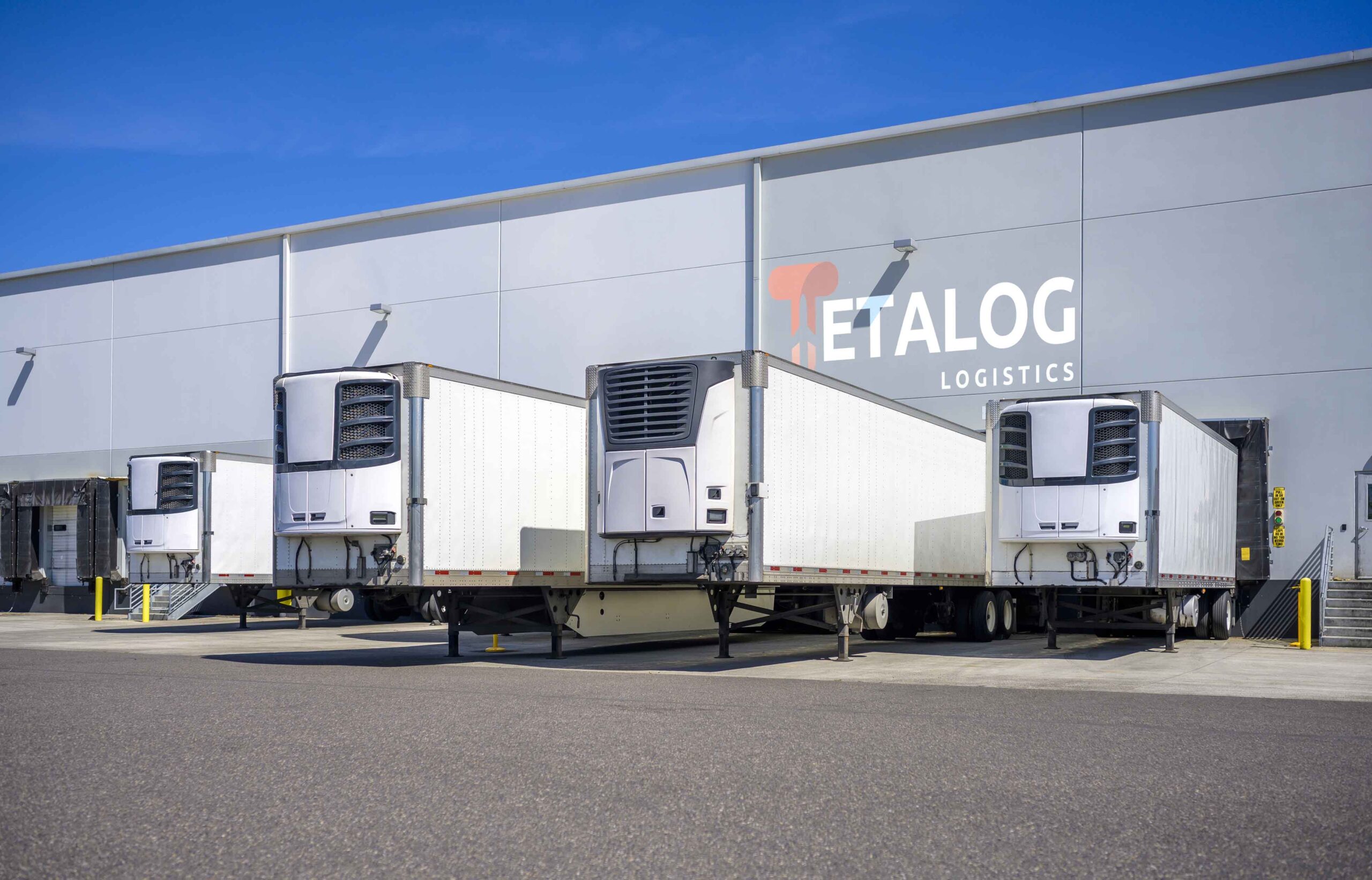
Cold chain transportation refers to logistics that create suitable environments for items that will spoil at room temperature or below a certain temperature, ensuring proper transportation standards. Cold chain logistics is especially frequently used in road transportation.
The way cold chain cargo is used is primarily for food transportation. Cold chain cargo is a logistics system used for any shipment that requires cold chain transportation. Cold chain transportation can be used in domestic shipments as well as in international transportation. Although it is generally used for food transportation, it is also preferred for medical supplies and all other loads that need to be transported at specific temperatures.
Cold chain logistics is a rapidly growing network that has made our lives easier with the development of technology, which has also solved many problems in logistics. Cold chain cargo is a new and revitalizing cargo system used by companies providing cargo services for loads that need to be transported at certain temperatures. Cold chain transportation is a method that allows the transportation of any products that are at risk of spoilage and must remain at specific temperatures. With this method, alternatives have emerged for transporting loads that need to stay within certain temperature ranges. There are 10 very important points in cold chain transportation. These points are;
- 1- Duration in the cold chain
- 2- Location in the cold chain
- 3- Route in the cold chain
- 4- Load in the cold chain
- 5- Company in the cold chain
- 6- Guarantee in the cold chain
- 7- Capacity in the cold chain
- 8- Payment and pricing in the cold chain
- 9- Quality in the cold chain
- 10- Transfer in the cold chain
If all these points yield positive results, the best alternative can be directed towards cold chain transportation.

Duration in the Cold Chain
One of the most important points in cold chain transportation is the duration. The loaded and transported cargo may need to reach its destination within a certain period. Usually, maximum transportation times are determined within these durations, and loading and planning are carried out accordingly. The goal is to deliver the cargo within this period without any damage. Duration, which is the most critical factor in cold chain logistics, refers to the maximum time the load can be transported. The load must be transported to the destination within the maximum time it can be on the road. When evaluating cold chain cargo options or cold chain transportation companies, how well these durations are adhered to should be researched and decisions should be made accordingly. Otherwise, problems may arise.
2- Location in the Cold Chain
The other point in cold chain transportation, the location, indicates where the loads will be picked up from and where they will arrive. It is used to specify the final destination where the cold chain cargo or cold chain transportation company will deliver the load, or the initial location where the load will be picked up. The most important aspect of location is adjusting the duration and route according to these locations. It is a critical factor that influences all plans in cold chain logistics. The initial location and the destination for delivery are vital. Every task during transportation is shaped according to this location, and durations are determined based on it. All plans are made and implemented according to these locations.
3- Route in the Cold Chain
The route is a very important aspect of cold chain transportation. Cold chain cargo and transportation companies create alternative routes based on the maximum delivery time of the load, demonstrating that they have backup options in case of problems. The importance of routes also lies in knowing what types of roads will be used and what the weather conditions will be. Properly setting the route is one of the most critical factors in cold chain logistics. Correctly planned routes save time and money, enabling more reliable supply chains. Problems can be minimized, and smooth deliveries can be achieved. As a result, the transported load can be delivered to the final destination without issues, within the desired time and conditions.
4- Load in the Cold Chain
One of the most essential inputs for determining everything in cold chain transportation is the load to be transported. The type of load determines the maximum transportation time, route, vehicle, and all other factors. The type of load has the greatest influence on all plans of companies providing cold chain logistics and on the customer's requests. The type of load to be transported forms the basis of the planning and schedules of cold chain cargo and transportation companies, even down to the smallest detail. Knowing what the load is will be the determinant of every plan and protocol to be implemented.
5- Company in the Cold Chain
Choosing the right company for cold chain transportation is crucial, as it determines how high quality and problem-free the transportation of the load will be. With advancing technology and increasing transportation and supply needs, many different companies offer various services in cold chain logistics. The increasing number of cold chain cargo and transportation companies affects the quality of services provided. The client must carefully select the company to ensure their load reaches the final destination in the best possible way. The quality of the service provided by the companies directly affects transportation issues and plays a role in the process after delivery.
6- Guarantee in the Cold Chain
Many cold chain cargo and transportation companies operating in the cold chain logistics sector provide guarantees and insurance for the loads they transport, ensuring that the cargo reaches the final destination in the safest manner. This trust ensures that the employer, who will transport the load, does not face issues, and the load is delivered in the best way. Guarantees include solutions for all problems that may arise during transportation, ensuring a healthy delivery process.
7- Capacity in the Cold Chain
Capacity, which significantly affects the amount of load to be transported in cold chain logistics, refers to the maximum amount of load that can be transported. Vehicles used for transportation are selected based on the amount of load to be carried. Alternatively, cold chain cargo and transportation companies actively serve in the cold chain logistics sector by filling capacities with different loads that meet the same standards. Cold chain transportation can be performed with a single vehicle or multiple well-adjusted vehicles without exceeding capacity or falling far below it.
8- Payment and Pricing in the Cold Chain
Pricing in cold chain transportation varies depending on the distance, amount, type of load, and number of vehicles to be used. Many private sector cold chain cargo and transportation companies offer services with different pricing structures. Payments can be made during service, at the end, or as a deposit, depending on what the service provider determines.
9- Quality in the Cold Chain
Differences in quality in cold chain transportation stem from the variety of companies providing services in the sector. Each company's service quality varies. In this case, factors such as budget, load, and time are considered, and transportation is carried out by choosing one of the companies with different quality levels. Variations in quality are due to the presence of many different companies in the sector. This situation is an important factor for employers who prioritize quality or do not, and it encourages competing companies to improve their standards.
10- Transfer in the Cold Chain
In cold chain transportation, transfer is generally not performed, but in some cases, transfer may be necessary for different locations or due to vehicle issues during transportation. Many cold chain cargo and transportation companies operating in the sector take precautions for such situations. The reactions during these transfer moments and being prepared for such cases are very important for the employer who will transport the load and for preventing spoilage of the transported goods. Quick responses and preparedness in these situations directly affect the quality of the services provided. Fast solutions in cases where transfer is required ensure that transportation does not stop and that the load is transported smoothly in the planned manner without issues.


